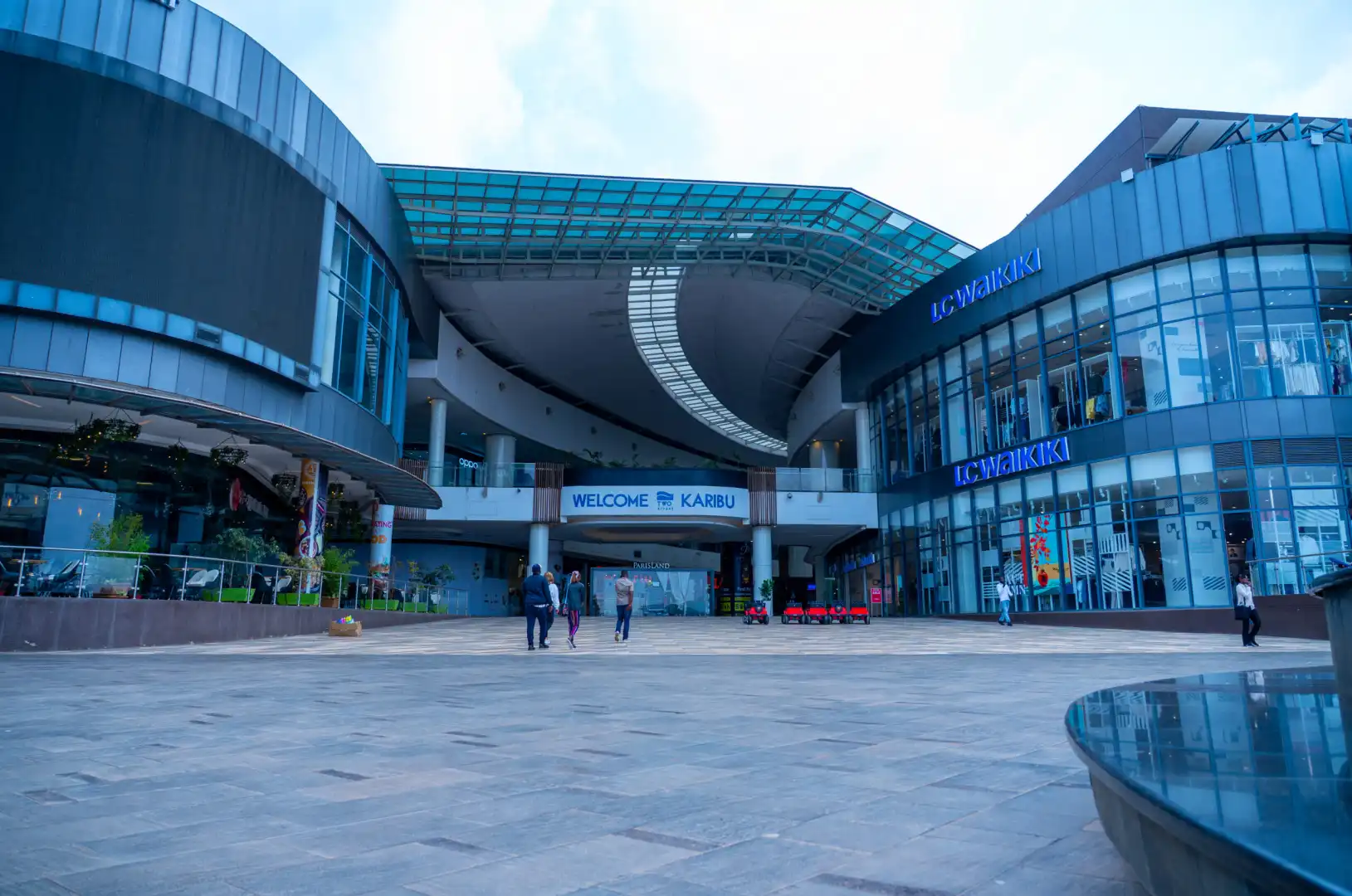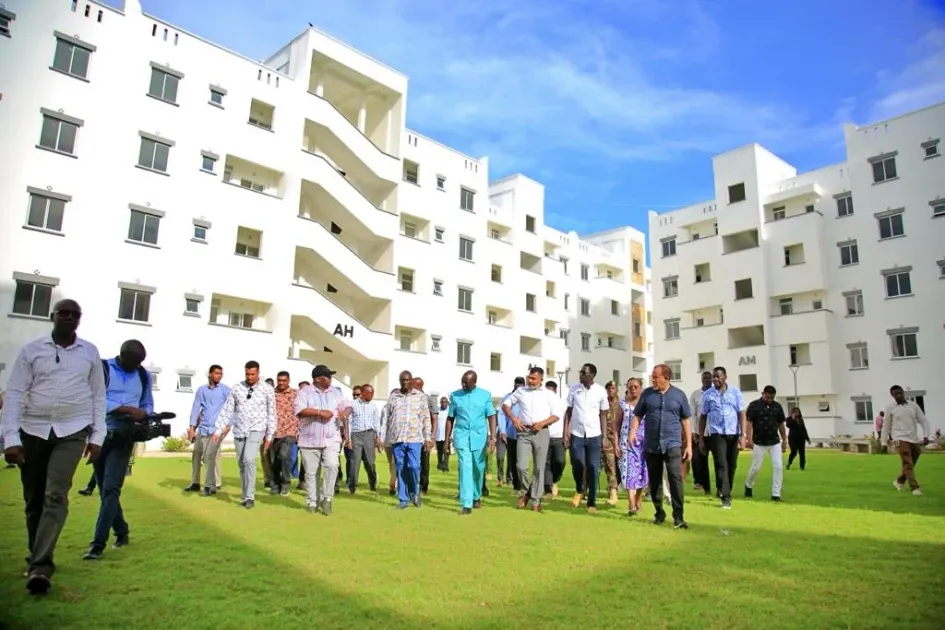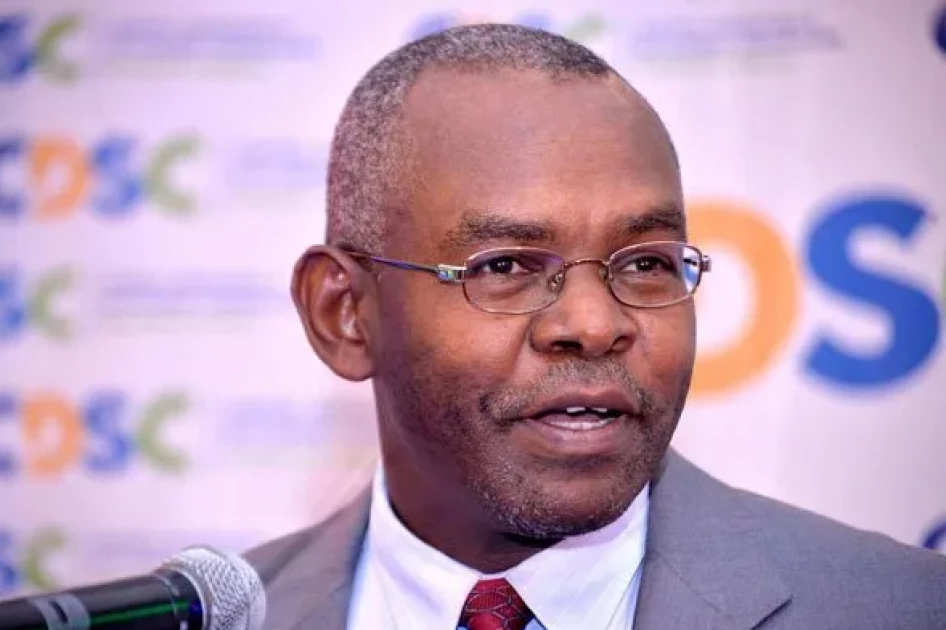Kenya’s government announced a new funding strategy aimed at reviving the stalled extension of its Standard Gauge Railway (SGR) from Naivasha to Malaba—a critical corridor poised to extend into Uganda, Rwanda, South Sudan, and even the mineral-rich Democratic Republic of Congo (DRC). The new proposal, unveiled amid growing concerns over fiscal constraints and evolving financing models, comes as a result of intensive negotiations between Kenyan authorities and a consortium of Chinese companies, marking a departure from traditional sovereign loan financing.
A New Financial Blueprint for East African Infrastructure
The ambitious railway project, estimated at US$5.3 billion for a 475-kilometer (295-mile) stretch, is set to be financed through a blended approach that combines public-private partnership (PPP) elements with strategic sovereign borrowing. According to Kenya’s Finance Minister, John Mbadi, the newly structured funding model will see a Chinese consortium shoulder 40% of the total cost. In a bid to recoup its investment, the consortium is expected to operate the railway and impose toll fees for a negotiated period. This operational arrangement is subject to further talks on the exact duration, a factor that will ultimately determine the long-term fiscal burden on Kenya’s economy.
In addition to the consortium’s contribution, 30% of the funding will be provided in the form of loans by the Export-Import Bank of China (China Exim Bank). This is a familiar element of previous infrastructure financing in the region; however, the new arrangement introduces a grace period extending until after 2029. This extension is particularly strategic, as it allows Kenya additional time to service the debt—by then, the current SGR is projected to have been largely repaid. The remaining 30% of the project’s financing is slated to come from the Kenyan government itself, primarily through revenues generated by the railways development levy and the securitisation of that levy.
This innovative blend of financing is a notable evolution from earlier approaches. The first phase of the SGR, covering 590 kilometers (367 miles) from Mombasa to Naivasha, was financed solely by Chinese policy banks. However, the construction of the extension to Malaba was abruptly halted in Naivasha after China Exim Bank called for a fresh commercial viability study in 2019—a move that reflected increasing caution in bilateral lending amid concerns about Kenya’s fiscal stability.
A New Era for the Belt and Road Initiative in Africa
China’s new funding proposal reflects a broader, strategic recalibration within the Belt and Road Initiative (BRI), which has traditionally relied on state-to-state loans to finance massive infrastructure projects. In recent years, the financial governance of the BRI has shifted toward models that incorporate public-private partnerships. Analysts argue that this shift is driven by both a need for increased bankability of projects and a more cautious approach from Chinese lenders, who are increasingly mindful of the economic challenges faced by recipient nations.
Tim Zajontz, a research fellow at the Centre for International and Comparative Politics at Stellenbosch University and interim professor in international relations at the University of Freiburg, commented on the evolution of Chinese financing strategies:
“Financing the extension solely through a sovereign loan had become unthinkable considering Kenya’s strained fiscal situation. By integrating equity investments and adopting a PPP framework, Chinese policy banks and investors are ensuring that infrastructure projects are not only bankable but also more sustainable in the long run.”
This new strategy, which emphasizes blended finance instruments combining loans with direct equity investments from Chinese companies, is being heralded as a model for future infrastructure projects in Africa. Similar to the approach used in the 27-kilometer Nairobi Expressway—financed and built by China Road and Bridge Corporation, which operates the expressway for 30 years before handing it over to the Kenyan government—the SGR extension’s funding structure is designed to ease the fiscal pressures on government coffers while ensuring that the project remains commercially viable.
Regional Trade and Economic Integration: The Promise of a Transnational Corridor
The extension of the Standard Gauge Railway is more than an infrastructure project—it is a gateway to enhanced regional trade and economic integration in East Africa. Once completed, the railway will not only link Kenya with Uganda but will also open up new corridors into Rwanda, South Sudan, and the resource-rich Democratic Republic of Congo. For Uganda, the project has already taken on additional momentum: the Ugandan government is independently constructing a 273-kilometer section from Malaba to Kampala, having awarded the contract to Turkish firm Yapi Merkezi. This transnational collaboration underscores the importance of the railway as a driver of regional growth and stability.
The DRC, in particular, has attracted considerable attention as China’s “pot of gold” at the end of the SGR. The mineral wealth of the DRC has long been a key factor in China’s economic strategy in Africa. However, as noted by sub-Saharan geoeconomic analyst Aly-Khan Satchu, the situation remains fraught with uncertainty:
“With increased uncertainty unfolding in eastern DRC and heightened spillover risk into the rest of the DRC, I expect Chinese funding to remain circumspect, and this ‘proposed’ deal to be put on ice.”
Despite these concerns, the underlying rationale for the railway extension remains robust. Improved connectivity is expected to facilitate not only the efficient movement of goods and people but also to unlock new trade opportunities across borders. For resource-rich regions like the DRC, better transportation infrastructure is seen as essential for harnessing their natural wealth to fuel broader economic development. In this light, the railway extension represents a critical step toward integrating disparate markets into a cohesive economic region.
The Human Element: Economic Impacts and Local Perspectives
While the financial and technical aspects of the SGR extension have dominated headlines, the human impact of the project is equally significant. For local communities along the proposed route, the railway promises a range of benefits—from reduced travel times and improved access to markets to enhanced opportunities for trade and job creation. For farmers and small business owners, improved logistics can mean faster delivery of goods, lower transportation costs, and more reliable access to urban centers where demand is higher.
In Naivasha, a town that has already seen substantial benefits from the first phase of the SGR, residents are optimistic about the prospects of the railway extension. Local businesses, which depend on timely shipments of perishable goods and essential commodities, view the new project as a lifeline that will help stabilize supply chains and boost economic activity. “An extended railway will not only link us to neighboring countries but will also bring much-needed investment and development to our communities,” said one local entrepreneur who has witnessed firsthand the transformative power of improved transportation infrastructure.
Moreover, the project is expected to generate significant employment opportunities during both its construction and operational phases. Engineers, construction workers, and service providers stand to benefit from the influx of capital and the long-term operational model that includes toll fee revenue. Such benefits are crucial in a region where unemployment and underemployment remain persistent challenges.
Navigating Challenges: Fiscal Concerns and Political Dynamics
Notwithstanding the promise of the new funding model, significant challenges lie ahead. Critics of the project have voiced concerns about the long-term fiscal implications for Kenya. The country’s already stretched government finances could be further strained by the need to service substantial loan repayments, even with the extended grace period. Political opposition has also been wary of the heavy reliance on foreign investment and the perceived loss of control over critical national infrastructure.
Aly-Khan Satchu, a prominent sub-Saharan geoeconomic analyst, has been particularly vocal about these issues. “The credibility of these sorts of Kenyan origin statements is zero,” Satchu remarked regarding the assurances made by officials about Chinese funding. His comments underscore the skepticism among some observers, who fear that the benefits of the project may be overstated while the fiscal risks remain underappreciated.
In response, Kenyan authorities have pointed to the broader benefits of a diversified financing approach that mitigates the risks associated with sovereign loans. By incorporating private sector participation and leveraging China’s expertise in infrastructure development, the government hopes to balance immediate fiscal challenges with long-term developmental gains. The new funding model is seen as a pragmatic response to an evolving global financial landscape—one where public-private partnerships and blended finance instruments are becoming the norm.
Global Context: China-Africa Relations and the Future of Infrastructure Financing
The proposed railway extension is emblematic of the complex and multifaceted nature of China-Africa relations. Over the past two decades, China has played a pivotal role in financing and constructing large-scale infrastructure projects across the continent. From highways and ports to railways and expressways, Chinese investment has been a driving force behind Africa’s development agenda. However, the evolving economic environment and recent global shifts have forced both Chinese investors and African governments to rethink traditional financing models.
Recent reports indicate that Chinese lenders have become more cautious in their overseas investments. This caution is partly driven by the need to manage risks associated with fluctuating global commodity prices, geopolitical tensions, and domestic economic reforms within China itself. As a result, the financial governance of projects under the Belt and Road Initiative has begun to incorporate more market-based mechanisms, including equity participation and public-private partnerships.
Tim Zajontz’s analysis highlights this trend:
“Blended finance instruments which combine loans from Chinese policy banks with equity investment from Chinese firms will become more frequent in the coming years.”
Such an approach not only diversifies the sources of capital but also aligns the interests of multiple stakeholders—governments, private investors, and international lenders—in ensuring the successful implementation of large-scale projects. The SGR extension serves as a test case for this new financing model, which could set a precedent for future infrastructure projects in Africa and beyond.
Furthermore, the changing dynamics in China’s approach to international investments reflect a broader strategic shift. As Chinese policymakers increasingly emphasize sustainable and commercially viable projects, there is a growing focus on ensuring that infrastructure investments yield tangible economic benefits. This shift is particularly evident in the transportation sector, where projects like the Nairobi Expressway and the SGR extension are designed to boost trade, reduce logistics costs, and integrate regional markets.
Strategic Implications for the Region
Extending the SGR to Uganda—and potentially further into the heart of Africa—carries significant strategic implications. For Kenya, the railway extension is not merely about improving domestic connectivity; it is a gateway to becoming a regional logistics hub. Enhanced rail links will facilitate the movement of goods between East African nations, reducing reliance on road transport, which is often hampered by traffic congestion and poor road conditions. The resulting efficiencies are expected to lower trade costs and stimulate economic activity across multiple sectors, including agriculture, manufacturing, and mining.
For neighboring Uganda, the railway represents a critical component of its national development strategy. With its section from Malaba to Kampala under construction, Uganda aims to reduce the cost of moving goods to international markets and improve access to essential services for its rural populations. The integration of Uganda’s railway network with Kenya’s SGR extension will create a seamless transport corridor that benefits both nations—and, by extension, the broader East African Community (EAC).
The implications extend beyond the EAC. Rwanda, South Sudan, and the resource-abundant DRC stand to benefit from improved cross-border logistics. In the DRC, where infrastructure has long been a bottleneck to economic development, the potential to tap into China’s extensive mining interests and modernize transportation networks could be transformative. However, as noted by critics, the uncertainty surrounding the DRC’s political and security environment poses significant risks that will need to be carefully managed.
The Human Side of Mega-Projects: Stories from the Ground
While the financing, strategic, and political dimensions of the railway extension are critical, the human side of the story is equally compelling. For countless East Africans, improved transportation infrastructure is a pathway to a better quality of life. In rural areas, where access to healthcare, education, and markets is often limited by poor road networks, a modern railway system can serve as a lifeline. Families will benefit from faster travel times, reduced transportation costs, and increased economic opportunities.
In Naivasha and along the planned route to Malaba, local residents are already expressing cautious optimism. “This project could change everything for us,” said a local shop owner. “Not only will it bring more business, but it will also connect our communities to larger urban centers and create jobs for the youth.” Similar sentiments are echoed by community leaders and local officials, who see the railway extension as a catalyst for regional development that goes beyond mere infrastructure.
Moreover, the project is expected to create a ripple effect in terms of skills development and job training. With Chinese companies at the forefront of construction and operations, there will be opportunities for local workers to gain valuable technical skills and expertise. In the long run, such capacity-building efforts can contribute to the development of a skilled workforce that is better prepared to manage and maintain modern infrastructure.
Future Outlook: Challenges and Opportunities
As the new Chinese funding plan for the SGR extension moves forward, several challenges remain on the horizon. The fiscal sustainability of the project, given Kenya’s already tight budget constraints, will be closely scrutinized by both domestic and international observers. Political debates over the terms of the public-private partnership and the long-term implications for national sovereignty over key assets are likely to continue. Additionally, geopolitical risks, particularly in relation to the DRC and other volatile regions, could complicate the project’s implementation.
However, opportunities abound. The new financing structure, which blends private investment with strategic loans and domestic funding, could serve as a model for future infrastructure projects not only in Africa but in other emerging markets. As the global economic landscape evolves, the need for resilient, efficient, and sustainable transportation networks becomes increasingly urgent. The SGR extension is poised to be a cornerstone of this vision, offering a blueprint for how countries can navigate complex financial, political, and operational challenges while still achieving transformative development outcomes.
Conclusion: A Transformative Step Toward Regional Integration
The announcement of a new Chinese funding plan to revive the extension of Kenya’s Standard Gauge Railway is a watershed moment for East Africa. By embracing a blended financing model that leverages private sector expertise and aligns the interests of multiple stakeholders, Kenyan authorities are charting a pragmatic course forward amid fiscal constraints and evolving global trends.
At its core, the SGR extension is about more than tracks and trains—it is about connecting communities, fostering economic integration, and building a future where improved infrastructure can drive sustainable growth. From the bustling urban centers of Nairobi and Kampala to the remote villages along the railway’s route, the benefits of this project are poised to touch countless lives, paving the way for enhanced trade, improved services, and greater economic opportunities.
As the region navigates the complexities of modern infrastructure development, the new funding strategy stands as a testament to innovation, resilience, and the transformative power of collaboration. With careful planning, transparent negotiations, and a commitment to sustainable growth, the SGR extension could very well become a cornerstone of East Africa’s economic renaissance—an enduring symbol of how visionary infrastructure projects can bring people and nations closer together.
In a time of rapid global change, where traditional financing models are giving way to more flexible, market-driven approaches, the new Chinese funding plan for the SGR extension serves as both a challenge and an inspiration. It challenges conventional wisdom on state financing while inspiring a new generation of infrastructure projects that are more sustainable, inclusive, and resilient. For Kenya and its partners in the region, the coming years will be critical. Success on this project could unlock a wave of further investments, setting a precedent for how emerging economies can harness the power of modern finance to build the foundations of tomorrow.
As Kenya prepares to move forward with this ambitious plan, the eyes of the world are watching—not just for the promise of improved transportation, but for a glimpse of how a new era of China-Africa economic cooperation might unfold, one that balances fiscal prudence with visionary infrastructure development, and that ultimately brings tangible benefits to the people it is meant to serve.
Ready to take your career to the next level? Join our dynamic courses: ACCA, HESI A2, ATI TEAS 7 , HESI EXIT , NCLEX – RN and NCLEX – PN, Financial Literacy!🌟 Dive into a world of opportunities and empower yourself for success. Explore more at Serrari Ed and start your exciting journey today! ✨
Photo source: Google
By: Montel Kamau
Serrari Financial Analyst
7th April, 2025
Article, Financial and News Disclaimer
The Value of a Financial Advisor
While this article offers valuable insights, it is essential to recognize that personal finance can be highly complex and unique to each individual. A financial advisor provides professional expertise and personalized guidance to help you make well-informed decisions tailored to your specific circumstances and goals.
Beyond offering knowledge, a financial advisor serves as a trusted partner to help you stay disciplined, avoid common pitfalls, and remain focused on your long-term objectives. Their perspective and experience can complement your own efforts, enhancing your financial well-being and ensuring a more confident approach to managing your finances.
Disclaimer: This article is for informational purposes only and does not constitute financial advice. Readers are encouraged to consult a licensed financial advisor to obtain guidance specific to their financial situation.
Article and News Disclaimer
The information provided on www.serrarigroup.com is for general informational purposes only. While we strive to keep the information up to date and accurate, we make no representations or warranties of any kind, express or implied, about the completeness, accuracy, reliability, suitability, or availability with respect to the website or the information, products, services, or related graphics contained on the website for any purpose. Any reliance you place on such information is therefore strictly at your own risk.
www.serrarigroup.com is not responsible for any errors or omissions, or for the results obtained from the use of this information. All information on the website is provided on an as-is basis, with no guarantee of completeness, accuracy, timeliness, or of the results obtained from the use of this information, and without warranty of any kind, express or implied, including but not limited to warranties of performance, merchantability, and fitness for a particular purpose.
In no event will www.serrarigroup.com be liable to you or anyone else for any decision made or action taken in reliance on the information provided on the website or for any consequential, special, or similar damages, even if advised of the possibility of such damages.
The articles, news, and information presented on www.serrarigroup.com reflect the opinions of the respective authors and contributors and do not necessarily represent the views of the website or its management. Any views or opinions expressed are solely those of the individual authors and do not represent the website's views or opinions as a whole.
The content on www.serrarigroup.com may include links to external websites, which are provided for convenience and informational purposes only. We have no control over the nature, content, and availability of those sites. The inclusion of any links does not necessarily imply a recommendation or endorsement of the views expressed within them.
Every effort is made to keep the website up and running smoothly. However, www.serrarigroup.com takes no responsibility for, and will not be liable for, the website being temporarily unavailable due to technical issues beyond our control.
Please note that laws, regulations, and information can change rapidly, and we advise you to conduct further research and seek professional advice when necessary.
By using www.serrarigroup.com, you agree to this disclaimer and its terms. If you do not agree with this disclaimer, please do not use the website.
www.serrarigroup.com, reserves the right to update, modify, or remove any part of this disclaimer without prior notice. It is your responsibility to review this disclaimer periodically for changes.
Serrari Group 2025












